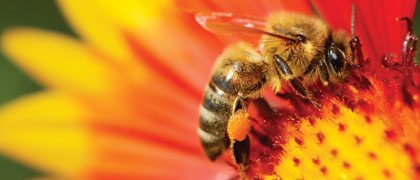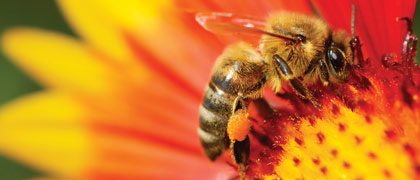Giant Highlights
The ability to offer real solutions to global challenges has placed the Canadian seed industry in a great position. Many of the experts in this year’s Giant Views of the Industry had interesting stories to tell about the opportunities for the future. Enjoy some of the highlights of their news and insights.
Making the Case for UPOV
“I think and hope that progress is being made [to move to UPOV 1991]. It has been over 20 years since Canada signed the UPOV convention of 1991. That signalled the intent to amend our Plant Breeders Rights Act to comply with the convention. Amendments were introduced in 1997, but they did not get through Parliament. Since then, the consequences of being one of the only developed countries with legislation that does not conform to UPOV 1991 are becoming more evident. Not only are Canadian plant breeding companies reluctant to invest, but international companies have stated that they will not supply new varieties to Canada because we don’t have comparable intellectual property protection. CSTA and farmer organizations have been consistently making the case for UPOV 1991, and we were very encouraged to hear ag minister Ritz commit to introducing legislative amendments with the intention to have it passed in 2014.”—Patty Townsend of the Canadian Seed Trade Association
What About the Bees?
“As you are aware, the European Commission has suspended the use of neonicotinoids for the next two years. The bottom line is that it’s a bad day for agriculture but also equally a bad day for the bees. It’s a bad day for agriculture because one of the best technologies for insect control is being taken away from farmers, and also one of the most environmentally friendly and safe technologies. It’s also a bad day for the bees because the suspension is not addressing the real cause of bee decline. That’s what we at Syngenta are focusing on. We launched a program called ‘Operation Pollinator’ 10 years ago, long before the whole discussion about the bees had been picked up in the public and had gotten some international attention. Operation Pollinator is addressing some of the lost habitat and nutrition that we are now trying to get back into the farm landscape for bees. We have also announced, together with another industry player, a five-point action plan to find solutions and come up with some more sustainable measures to improve bee health. It is those types of measures that will help the bees, and not the suspension of the neonics.”—Karsten Neuffer of Syngenta Seedcare
Strategic Partnerships
“We tend to look for partners that have the same values as us, but bring products to the marketplace that wouldn’t normally be available. Examples of that would be companies like DSV and [NPZ-Lembke] in Germany—they have been in canola breeding for virtually forever. They have some unique genetics that we think bring added value to the Canadian farmer through our relationship with them and of course their sister company, DL Seeds, in Canada — we’re able to market some of their canola products.” —Lloyd Dyck of BrettYoung Seeds
Marker-Assisted Breeder and Hockey
“We’ve had a good niche with conventional type hybrids, that’s been a void we’ve been able to fill but unfortunately that niche is not an expanding segment. We will participate in conventional corn hybrids as long as there is demand—and there’s been a good demand—so we’re committed to that market segment for the time being. Marker-assisted selection is a great tool and I liken it to if I was given the task to building a new hockey team. I could put a sign up that says ‘come and join my hockey team, I’m looking for hockey players,’ or marker-assisted selection is like if I got the Top 50 hockey players in the world and I got to pick 20 out of that group. Clearly if I had the Top 50 players and could make a team out of that, it would be a lot easier than just getting people in off the street. That’s the big step-change that we get with marker-assisted selection. It allows the breeders to really pick new crop species or lines or hybrids out of a much more focused germplasm pool. We’re going to have great breakthroughs in the next 10 years due to marker-assisted selection.”—Tim Welbanks of Maizex Seeds
Globalization
“Global breeding partnerships are absolutely core to our program; they provide access to germplasm, to potential varieties, from all sorts of different areas that otherwise would not be seen in Western Canada. If these products are successfully registered, they provide new options to farmers and to end-users. A number of our global partners will visit us on an annual basis, allowing them to see their material directly in the field in Western Canada. This also provides a wonderful opportunity to help educate them about what’s happening in this marketplace. Whether these breeders are making genetic selections based on these in-person visits, or if their decisions are made from the data that is collected and provided by our research team, we work closely with our global partners to decide what products will have a fit for our customers here in Canada.”—Erin Armstrong of Canterra Seeds
Listening to the Farmer
“We have a lot of contact with farmers. Our people are listening to farmers. They are understanding, and they are sharing their passion. This enables our people to really apply their expertise. We have the head of the scientist and the heart of the farmer and our people are therefore able to meet both the demands and the needs of farmers. We are able to develop customized solutions for farmers.”—Matthias Haug of Bayer CropScience
Public Sector Alive and Well
“The public [breeding] programs are very strong, and we have commercialized a number of excellent varieties from them over the years. However, our access to those varieties is not always guaranteed, which is part of the reason we work with others to allow for a steady stream of new varieties to our portfolio.”—Erin Armstrong of Canterra Seeds
“The combination of chemical solutions with traits creates multiple modes of action that help growers avoid resistance build-up.”
—Karsten Neuffer, global head of Syngenta Seedcare
Complimenting Technologies
“In addition to seed treatment technology, I am impressed by the technologies that seed companies are continuously bringing to market. They also contribute to global food security regardless of whether they fall into the area of genetics or traits. Therefore, I don’t see the seed treatment technologies as in any way substituting or competing with those technologies. On the contrary, they are very complementary to what seed companies offer. Specifically, I think there are two areas where seed treatment technology can provide the biggest and most complementary benefit to seed companies. The first one is where our seed treatment technology can help with the seed protection, the early crop establishment, or the early season pest control. Secondly, there are also some vital opportunities seed treatment offers in terms of integrated resistance management. The combination of chemical solutions with traits creates multiple modes of action that help growers avoid resistance build-up.”—Karsten Neuffer of Syngenta Seedcare















